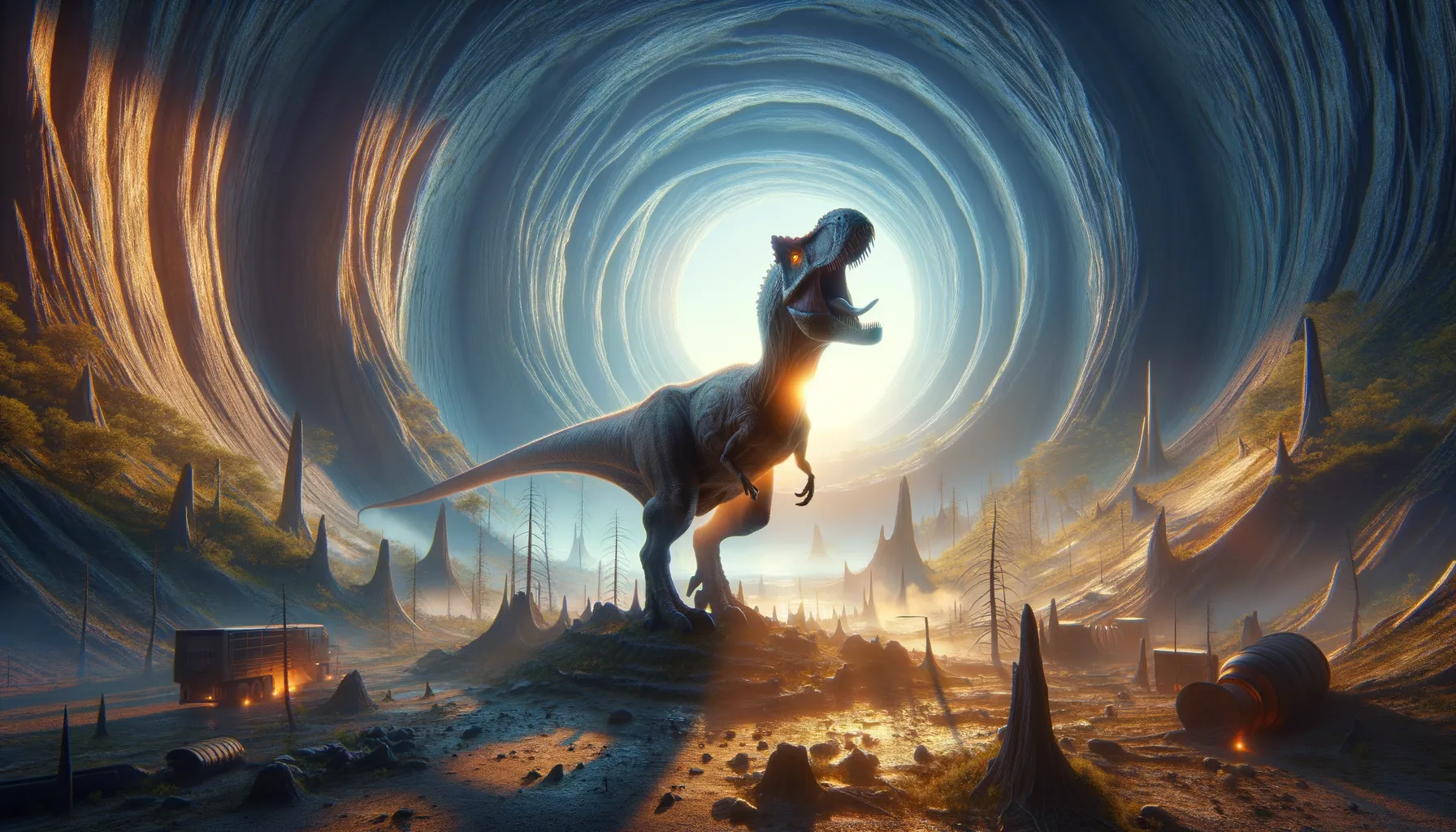
Darwinsaurus
Unearthed mystery, yet to be discovered!
Period
Unknown
Length
Information not available due to lack of fossils.
Height
Information not available due to lack of fossils.
Weight
Information not available due to lack of fossils.
Darwinsaurus is not an officially recognized dinosaur, and no fossils or scientific descriptions exist for this name. It may have been a misattribution or misinterpretation in historical records. Consequently, there are no specifics about its size, living period, or physical characteristics. Dinosaurs are often evaluated through meaningful fossil records, yet in this case, the data remains speculative or absent.
Diet
Without fossil evidence, its diet remains unknown. Potentially, if it existed, its diet would depend on its classification among herbivores, carnivores, or omnivores.
Hunting
In the absence of discovered fossils or geological context, specific hunting behaviors cannot be inferred. Hypothetically, if it were a carnivore, it might have stalked smaller creatures, but no evidence supports this.
Environmental challenges
Environmental challenges would largely be theoretical without confirmed fossils or geological contexts. Hypothetical scenarios would suggest adaptations to survive climate variations, avoid predators, and find nourishment, which were common challenges for all dinosaurs. The survival strategies, however, remain unknown without physical evidence.
Speed
Not enough evidence to determine speed.
Lifespan
Unknown due to lack of fossil evidence.
First discovery
Not yet discovered or described scientifically.
Fun Facts
- Darwinsaurus is a lesser-known dinosaur that lived during the Late Jurassic period.
- The name Darwinsaurus pays homage to the famous naturalist Charles Darwin.
- This dinosaur was a herbivore, meaning it primarily fed on plants.
- Darwinsaurus likely roamed the lush landscapes of what is now Europe.
- Unlike some of its dinosaur cousins, Darwinsaurus was relatively small, making it swift and agile.
- Fossils of Darwinsaurus have helped scientists understand more about the diversity of plant-eating dinosaurs.
- Darwinsaurus had a long neck which helped it reach high vegetation and spot predators from a distance.
Growth and Development
Data unavailable due to lack of fossils, making growth patterns speculative. Typically, growth rates in dinosaurs varied significantly across species, influenced by ecological factors.
Habitat
Habitat remains unknown without a scientific discovery. If discovered, it could suggest specific environmental preferences like forests, plains, or swamps, typical of different dinosaur habitats.
Interaction with other species
Lacking evidence of existence, interactions with other species remain speculative. Dinosaurs varied in social behaviors, from solitary to group dynamics, depending on their needs and species-specific traits.
Natural lifespan
Unknown due to lack of evidence.
Reproduction
Reproduction methods remain speculative. Dinosaurs typical reproductive behaviors involved egg-laying, with variations according to their groups.
Social behaviour
Social behavior remains purely speculative in the absence of fossils. Dinosaurs historically ranged from solitary predators to social herbivores that moved in herds.
Fossil locations
As 'Darwinsaurus' has not been scientifically documented, there are no confirmed fossil locations. Many dinosaurs are found across varied geologic sites globally, but this name lacks such backing evidence.
